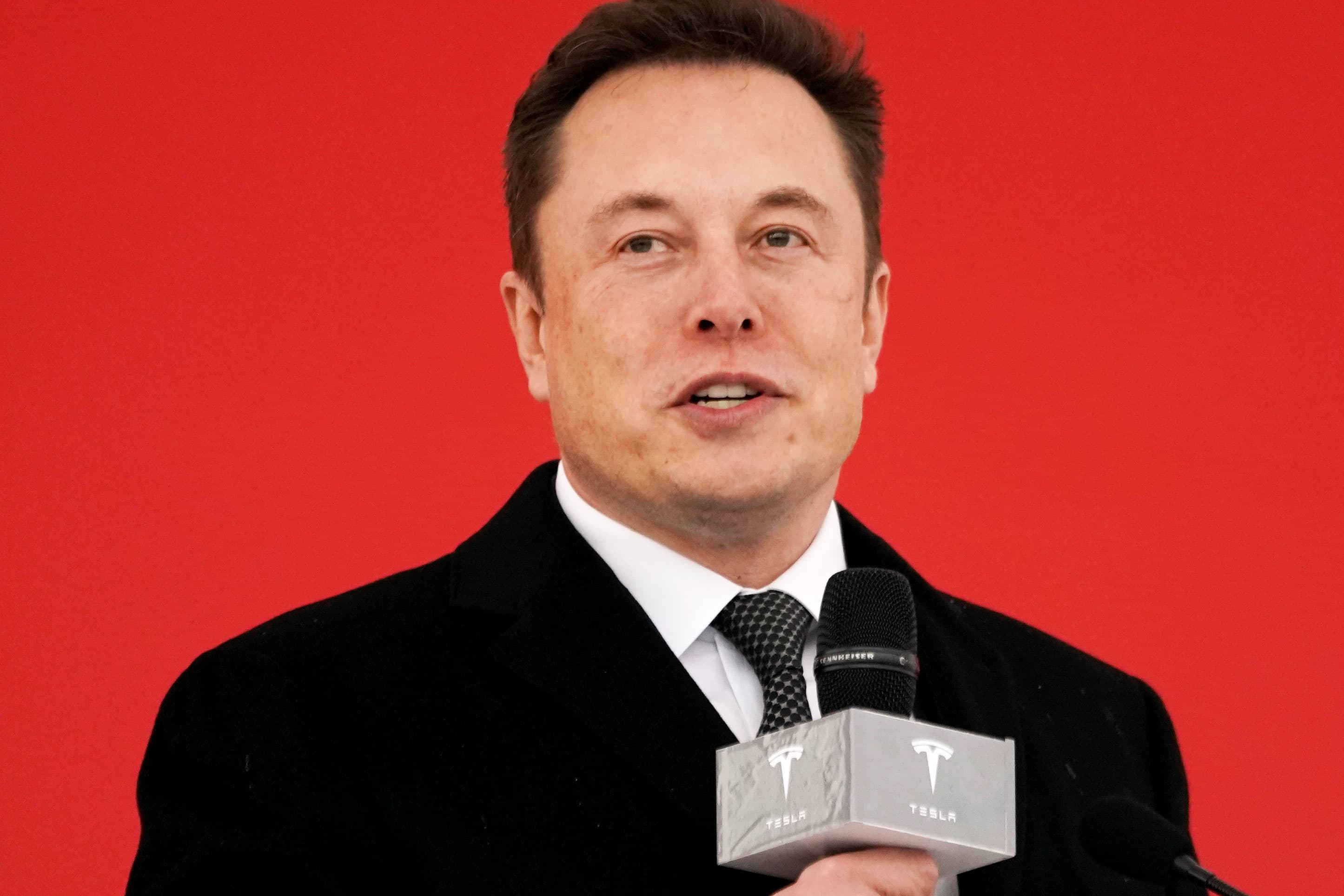This photo of a production version of Tesla’s Model Y was included in the company’s Q4 2019 earnings report.
Tesla
Tesla plans to report second-quarter results Wednesday after the bell, and all eyes are on the bottom line at Elon Musk’s electric car and renewable energy business.
If Tesla achieves positive net income for the period ending June 30, 2020, it would mark the company’s first full year of reported GAAP profitability. That, in turn, would enable Tesla to be considered for inclusion on the S&P 500 index.
Here’s what the street was expecting as of Wednesday:
- Earnings: 3 cents per share, according to Refinitiv consensus estimates.
- Revenue: $5.37 billion, according to Refinitiv consensus estimates.
Refinitiv compiled data from 16 analysts whose estimates varied widely, from losses of $2.53 per share to earnings of $1.45 per share for Tesla, and from revenue of $2.78 billion on the low-end to $6.18 billion on the high-end for the second quarter.
In the year-ago quarter, Tesla‘s automotive revenue came in at $5.38 billion of $6.35 billion total, with $111.2 million from regulatory credits. Tesla reported losses per share of $1.12, missing analysts’ expectations during this period last year.
At this time last year, Tesla’s shares were trading around $260. Now, they’re trading above $1,500, making the company the most valuable auto-maker in the U.S. by market cap.
During the period ending June 30, 2020, Tesla grappled with the effects of the Covid-19 pandemic and widespread civil rights protests on its employees, customers and U.S. factory operations, especially.
The company also achieved better-than-expected second-quarter vehicle production and delivery numbers, sending Tesla’s stock price soaring. In July, Tesla shares have risen more than 50% so far, adding to the stock’s more than threefold increase for the year to date.
While the stellar stock performance sent bears running for cover, questions loom large about Tesla’s financial well-being and demand for its luxury electric vehicles in North America, especially with the persistence of Covid-19 in the U.S., historically the company’s biggest market.
Tesla will need to spend significantly to move forward with plans for its all-electric Tesla Semi, million mile battery, trapezoidal Cybertruck, Full Self Driving systems, and to build new factories it has promised shareholders, including one outside of Berlin and another in the middle of the U.S., for which it obtained a promise of tax incentives.
To safeguard its bottom line in the middle of the global health crisis, among other things, Tesla furloughed thousands, temporarily suspended contract assignments, slash salaried employee pay by 10% to 30%, and to delay annual performance reviews in order to avoid giving promotions, bonuses and pay increases to employees until the end of July.
Tesla also renegotiated its pricing agreement with Panasonic, its major supplier of battery cells, according to a financial filing published in June.
The second quarter of 2020 represented the first full quarter of sales of the Model Y, Tesla’s crossover SUV, which the company began to deliver to customers in mid-March.
Tesla employees are still building the Model Y with a mostly manual process, in a tented assembly line at the company’s Fremont, California car plant, as CNBC previously reported. As a result, Tesla is has struggled quality control for the Model Y, much as the company did at the start of production for the Model 3.
This is breaking news. Please check back for updates.
